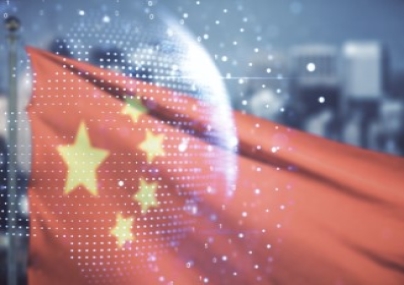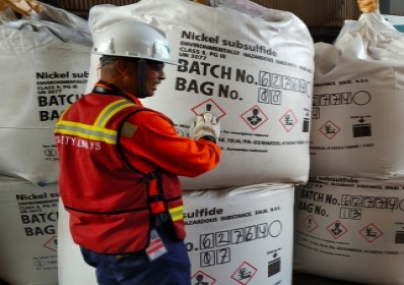
The year 2019 has been marked by headlines about the ongoing trade war between the world’s two largest economies, the U.S. and China. The trade war has kept investors cautious of making deals that could be affected by growing geopolitical risks and protectionism.
|
CHINA DOMESTIC |
|||
|
Tier 1 |
Tier 2 |
Tier 3 |
Notable Firms |
|
|
|
|
|
CHINA INTERNATIONAL |
||
|
Tier 1 |
Tier 2 |
Tier 3 |
|
|
|
|
HONG KONG SPECIAL ADMINISTRATIVE REGION |
||
|
Tier 1 |
Tier 2 |
Tier 3 |
|
|
|
|
INDIA |
||
|
Tier 1 |
Tier 2 |
Tier 3 |
|
|
|
|
INDONESIA |
|||
|
Tier 1 |
Tier 2 |
Tier 3 |
Notable Firms |
|
|
|
|
|
JAPAN DOMESTIC |
||
|
Tier 1 |
Tier 2 |
Tier 3 |
|
|
|
|
JAPAN INTERNATIONAL |
|
|
Tier 1 |
Tier 2 |
|
|
|
MALAYSIA |
|
|
Tier 1 |
Tier 2 |
|
|
|
PHILIPPINES |
|
|
Tier 1 |
Tier 2 |
|
|
|
SINGAPORE DOMESTIC |
||
|
Tier 1 |
Tier 2 |
Tier 3 |
|
· Allen & Gledhill · Rajah & Tann Singapore · Morgan Lewis Stamford · WongPartnership |
· Dentons Rodyk · Drew & Napier · Shook Lin & Bok · TSMP Law Corporation |
· Baker McKenzie Wong & Leow · Bird & Bird ATMD · CNPLaw · Duane Morris & Selvam · Eversheds Harry Elias · Pinsent Masons MPillay · RHTLaw Taylor Wessing |
|
SINGAPORE INTERNATIONAL |
||
|
Tier 1 |
Tier 2 |
Tier 3 |
|
|
|
|
SOUTH KOREA DOMESTIC |
|
|
Tier 1 |
Tier 2 |
|
|
|
SOUTH KOREA INTERNATIONAL |
|
|
Tier 1 |
Tier 2 |
|
|
|
THAILAND |
|
|
Tier 1 |
Tier 2 |
|
|
|
VIETNAM |
|
|
Tier 1 |
Tier 2 |
|
|
Weighed down by bearish market sentiment, mergers and acquisitions (M&A) activity across Asia is losing steam, and hitting lows not seen since 2013. The bleak picture is visible in data from Mergermarket, which showed a great deal of market uncertainty.
Asia has seen 19 percent fewer deals during the first six months of this year, according to the data. The number of deals fell from 2,268 during the same period last year to 1,837. The drop has also resulted in a 31.08 percent decline in deal value, from $393.5 billion to $271.2 billion.
Looking at the Asia-Pacific region excluding Japan in particular, M&A activity dropped by 36 percent to $241 billion in deal value during the first half of 2019 versus the first half of 2018. Both inbound and outbound activities dropped 28.5 percent and 25 percent, respectively.
This led to Asia’s share of global M&A shrinking to 14.4 percent of the world total from 18.6 percent last year. This is the lowest value for any first half-year since 2013.
The decline started in the first quarter of the year and it was not surprising when it continued into the second. The first quarter of 2019 saw 782 deals worth $143.9 billion and the numbers were even lower in the second quarter with 743 deals worth $97 billion.
The latest data from S&P Global market intelligence also showed the same trend. In June, the volume of total financial and strategic M&A deals continued its downward trajectory to the lowest level for the past six months. Strategic and financial deals fell 23 percent and 9 percent, respectively, compared to the previous month.
China represented over half of the total regional deal value and market sentiment and trends from the country have emerged as the main driving force behind the slowdown in the region’s M&A activity.
To begin with, the plunge in Chinese outbound investment into the U.S. and Europe was a big factor in the slowdown in M&A activity in Asia this year. The amount of Chinese money heading to Western markets was subdued, and hit lows not seen since 2009. China’s deal value also plunged 44.7 percent in the first half of 2019.
One important focus of the trade war has been technology, a sector that saw a 66 percent decline in deal value. “The tech war between the U.S. and China is threatening to disrupt the supply chain and create a ‘digital iron curtain’ between countries using U.S. technologies and those who adopt Chinese ones,” says Riccardo Ghia, Mergermarket’s research editor for the APAC region.
And it is not just the tech sector that is a victim. Almost all the sectors recorded a decrease in both deal value and volumes during the first six months of this year.
Industrials and chemicals, a sector that saw the most dealmaking, experienced an 18.2 percent decline in value, along with financial services (down 23 percent) and energy, mining and utilities (down 41 percent. Only the consumer sector survived from the downtrend to record a 7.6 percent increase.
Another category to note is the decrease in private equity buyouts, which dropped to $28.8 billion and 160 deals from January to June this year from $67.1 billion and 263 deals during the same period last year.
Private equity exits also appeared bleak, with deal value down 45.15 percent but these are expected to improve with the launch of Shanghai’s sci-tech board known as the STAR in June. The Nasdaq-style board that welcomes companies with emerging technologies, even the pre-profit ones, could be an exit for investment funds that have a stake in Chinese tech companies.
A BETTER ENDING?
The global downturn is likely to continue from a macroeconomic perspective in the second half of this year due to the turbulence in global financial markets and a dampened global private sector sentiment, but things could look better than the disappointing first six months.
Global accountancy and consultancy PwC said there could be something of a rebound for the year should uncertainties clear. If a trade deal does happen, there may be some uptick in foreign inbound investment, as certain sectors such as automotive, financial services and technology could be opened up.
Ratcheted up rhetoric and tariffs from both the U.S. and China on August 23 raised doubts about the likelihood of a deal but talks were set to continue in September.
For now, PwC remains bearish and expects fewer mega-deals to be made in the remaining days of this year due to heightened political scrutiny of large cross-border M&A deals and countries protecting their strategic assets.
Meanwhile, market researcher Euromonitor believes Chinese investors will look for other markets outside the U.S. amid a challenging regulatory environment.
“We believe Europe would continue to be a popular destination for offshore M&A, while Latin America and Africa are also drawing investors’ attention,” it said in April.
It added that upcoming policy changes in China to ease access of foreign investment into the country could also have an impact on future M&A and investments.
And while the tech sector has taken the biggest hit as mentioned, Euromonitor believes it will remain the focus for M&A activity. Other sectors that play with concepts related to eco-friendliness, health and wellness will also keep the market busy.
“Telecommunication, property and construction, banking, logistics, power and utilities industries are also not keeping quiet in the M&A space and travel and services market are also moving, with Cathay Pacific acquiring HK express and Klook raising their Series D+ funding,” said Euromonitor.
CHINA
During the first half of 2019, deal volume in China (including the Hong Kong Special Administrative Region) fell 19.1 percent to 783 deals from 968 during the same period in 2018, according to Mergermarket data. Similarly, deal value fell 38.53 percent from $215.7 billion to $132.6 billion.
The figures did not suggest a good start for the year for China, with a trade war raging and a deal nowhere in sight. The U.S. is stepping up scrutiny of foreign direct investments (particularly from China), often on grounds of national security. Many believe China is the target.
As a result, Chinese outbound investment fell to $21.5 billion and money into the U.S. and Europe even reached new lows since 2009 during the first half of this year. PwC said China’s outbound M&A values were almost halved and private equity deal values dropped 33 percent to $87 billion during the first six months of this year.
“The number of large overseas M&A deals by Chinese companies has decreased. This is because major developed countries in Europe and the US have strengthened their censorship and restrictions on investment from China in recent years, which has limited the choice of Chinese companies for cross-border acquisitions,” said Charles Guan, Managing Partner at Grandall Law Firm (Shanghai). “Sino-US trade frictions, the changes in the political situations and the economic factors have increased the uncertainty of M&A deals, putting companies on the fence.”
“Companies are more cautious about cross-industry M&As. The Chinese government has strengthened the supervision of large-scale irrational foreign investment in irrelevant business fields, especially in non-strategic areas or overvalued investment areas, which has also reduced M&A activities,” said Guan.
PwC is among those who expect the volume of outbound M&A transactions in the Belt and Road countries to grow as China pushes forward its foreign policy to strengthen ties with neighbouring countries.
“Chinese companies have increased their M&A investment in countries along the Belt and Road, including Singapore, Malaysia, Thailand, Vietnam, Indonesia, the Philippines, India and Pakistan,” said Guan. “The Belt and Road Initiative advocated by the Chinese government has added to the outward investment of Chinese enterprises in these regions.”
And Chinese companies are also looking more at their increasingly large domestic market.
“Domestic M&A deals have increased because the downturn in cross-border M&A activities has turned investors’ attention to the domestic market’ said Guan. “M&A deals that are closely related to a company’s core business, and have technology or supply chain companies as target companies, maintain steady growth. M&As the fields of smart manufacturing, consumption upgrade, high technology, and health care, are also frequent. The Chinese government supports and promotes M&A transactions with the purpose of strategic investment.”
Meanwhile, market watchers believe inbound M&A transactions will go up thanks to China’s recent campaign to ease restrictions on foreign investment. On March 15, China promulgated a new foreign investment law to create a unified set of rules and level playing field for both domestic and foreign enterprises while giving foreign players more protection.
“The foreign investment law signifies China’s message to the world that it is open for business and welcoming foreign investment,” said Howard Wu, Chief Representative of Baker McKenzie’s Shanghai office.
This followed the release of a new Negative List in June 2018, in which China showed its willingness to gradually open its market to foreign investors.
With the opening of sectors such as automotive and financial services, market watchers expect China to see more inbound foreign investments in these sectors.
A case in point is a proposal by carmaker BMW to increase its ownership from 50 percent to 75 percent by 2022 in a Sino-foreign joint venture known as BMW Brilliance Automotive.
The consolidation of state-owned enterprises is also expected to remain active to prepare the country for future expansion in strategic sectors.
But as uncertainty remains because of the ongoing trade talks, M&A activity in China could still be soft in the second half of this year.
Meanwhile, China’s special administrative region Hong Kong recorded an increase in deal value during the first five months of this year amid the downward trend. The city announced 47 transactions worth $14.7 billion, up 31 percent from $11.2 billion during the same period in 2018.
Two large deals drove the increase. The first is Hanergy Thin Film Power Group’s privatisation that added up to $6.82 billion and China Power Clean Energy Development’s privatisation that involved $2.86 billion.
NORTH ASIA
Countries in North Asia, including Japan and South Korea, saw a decline in both deal volume and value during the first half of this year. The region recorded 427 deals, down 12.9 percent from 490 deals during the first six months of last year. Deal value also dropped 14.6 percent, from $52 billion to $44.4 billion.
Japan is the biggest market out of the three. The country alone took up $18.1 billion in deal value, almost half of the combined value. Intriguingly, despite the downward trend in the region, Japan recorded a 2.4 percent increase in deal value compared to $17.7 billion during the first half of 2018.
Mergermarket attributed Japan’s healthy M&A activity to its central bank’s ultra-loose monetary policy that keeps lending rates ultra-low, which encourages investment.
The investment-friendly environment fostered a big deal in the country. Telecom giant SoftBank Corporation acquired a 31.75 percent stake in Yahoo Japan for $4.2 billion, making the deal value for technology sector soar to $6.3 billion, the highest first-half year record.
Japan also experienced dramatic changes to its inbound and outbound M&A value. Inbound activity surged 114.3 percent by value to $3.9 billion during the first six months of this year from $1.8 billion during the same period last year. However, outbound M&A value plunged 58.7 percent to $42.6 billion from $103.1 billion. With that said, it still surpassed China’s $21.5 billion for the third time in a row.
But the sharp decline in the country’s outbound deal value had little to do with the overall downward trend in the region. The first half of 2018 made a record because Takeda Pharmaceutical acquired Shire for $78.2 billion, thus driving the number to unusually high.
The geopolitical factors also helped keep Japan’s M&A activity strong, and momentum could continue into the second half of the year if a trade deal is not yet made between China and the U.S.
“The ongoing Sino-U.S. trade war may indeed be providing more opportunities for Japanese bidders and less competition from Chinese counterparts in the global M&A market,” said Danni Sun and Joji Sekinuma, analysts for the APAC region at Mergermarket.
South Korea, on the other hand, experienced weaker M&A activity in the first quarter of this year, the first time in 10 years. According to Bloomberg’s data, deal volume fell 19.5 percent to 294 and deal value slid 33.8 percent to $13.9 billion.
Meanwhile, the outbound deals by South Korean companies rose 35.6 percent to $3.25 billion. However, inbound deals dropped 21.3 percent to $2.37 billion. The largest deal in the first quarter was Hyundai Heavy Industries Group’s $1.83 billion acquisition of Daewoo Shipbuilding & Marine Engineering.
Despite a gloomy economic outlook in general, law firm Herbert Smith Freehills believes South Korea’s M&A market will remain robust.
“While a slowdown in the domestic economy is expected in 2019 due to various factors, key M&A drivers will continue to support strong M&A activity,” say Dongho Lee, managing partner of HMS’ Seoul office and Lewis McDonald, partner and head of corporate of Asia at HMS.
“Such drivers include large cash reserves and committed capital to deploy for acquisitions, the strategic need for large Korean conglomerates to stay ahead in a rapidly changing technological environment, and the search for new geographical markets in connection with expansion plans,” they note.
INDIA
Last year was a strong year for M&A deals in India, according to Reuters. India has also boomed with $126 billion in deals, almost double its prior record of $67 billion in 2007, boosted by Walmart’s $16 billion acquisition of marketplace Flipkart and Unilever’s $3.8 billion deal to buy Horlicks nutrition business. “India remains a growing long-term market for multinationals and it will continue to look at opportunities to strengthen its presence,” Reuters quoted Rohit Chatterji, JPMorgan’s co-head of Asia-Pacific M&A in an earlier report. Inbound deals will drive India’s volumes, he added.
SOUTHEAST ASIA
Southeast Asia resisted the overall gloomy M&A trend in the region to see higher deal value. It climbed 40.9 percent higher to $34.8 billion during the first half of 2019 from $24.7 billion during the same period last year, data from Mergermarket shows. The region also recorded a 19.43 decline in deal volume to 170 deals from 211 deals, meaning that deals were getting bigger during the period.
“Against the backdrop of a challenging market and continued geopolitical considerations, South East Asia is seeing reasonable levels of M&A activity within the region compared with 2018,” Suet-Fern Lee, director at Morgan Lewis Stamford, tells Asian Legal Business.
“The real estate and construction sectors appear to be driving a significant portion of the deal flow, driven by investment from both within Asia and further afield. Regulatory reform in jurisdictions such as Vietnam, Myanmar and Indonesia have also encouraged foreign investment,” said Lee. “The technology sector continues to see a strong pipeline of activity also. In more mature markets such as Singapore, consolidation is a key theme with a higher volume of smaller-scale acquisitions as businesses adapt to the current market, particularly in the real estate sector.”
“The global nature of our firm means that we also see a steady string of complex cross border matters that require multi-jurisdictional experience, both from advising companies on outbound investments in addition to global corporates in their establishment in and continued expansion across Asia.”
Singapore, Indonesia, Malaysia and the Philippines all recorded an increase in M&A value, with the Philippines outperforming other regional peers. Thailand and Vietnam, on the other hand, saw their deal value drop.
Singapore’s M&A value rose 154 percent year on year to $17.1 billion. The country struck the biggest deal in the Asia Pacific region in the first half of the year, initiated by listed real estate giant CapitaLand to acquire sustainable urban solutions provider Ascendas-Singbridge for $8.1 billion.
Indonesia also saw a significant increase in deal value, up 88.6 percent to $6.6 billion. Law firm Herbert Smith Freehills believe the growing middleclass consumption and exploding digital economy are the forces to drive more foreign investment. And fintech is an important sector to watch out for.
“The rapid growth in number of fintech start-ups will continue,” the law firm says.
“Foreign players mainly from China will continue to explore opportunities and seek to further penetrate the market particularly concerning mobile payments.”
Malaysia recorded moderate growth, up 16.4 percent to $3.7 billion in an economy that is not strongly performing. But Herbert Smith Freehills says the new government’s efforts to strengthen the rule of law and remove corruption could encourage more investment this year.
“If the legislative amendments are aligned with the government’s pledge to improve transparency and instil good governance, then they are likely to be viewed as positive by foreign investors,” the law firm says, while predicting that healthcare, education and renewables to be key sectors for investment activity this year.
But it is the Philippines that made jaw-dropping progress. The island nation’s deal value soared 398.2 percent to $2.2 billion. Mergermarket attributes the surge to the country’s Build, Build, Build campaign that spurred consolidation among cement players. For example, conglomerate San Miguel Corporation acquired an 85.7 percent stake in cement supplier Holcim Philippines for $1.85 billion, driving the country’s M&A deal value to new highs.
While its neighbouring countries were posting rosy data, Thailand failed to do so. Its M&A activity fell 64.7 percent to $3.1 billion during the first six months of 2019. Market watchers blamed it to the political uncertainty arising from the power struggle between the pro-military camp and the opposition parties.
Vietnam’s performance is in line with Thailand’s. M&A deals in Vietnam slid 47 percent to $1.9 billion during the first half of this year, despite seeing robust cross-border M&A deals for the past 10 years. A notable deal during the period was South Korean KEB Hana Bank’s acquisition of a 15 percent stake in Vietnam’s commercial bank BIDV, the country’s largest lender by assets for $868 million.
To contact the editorial team, please email ALBEditor@thomsonreuters.com.



